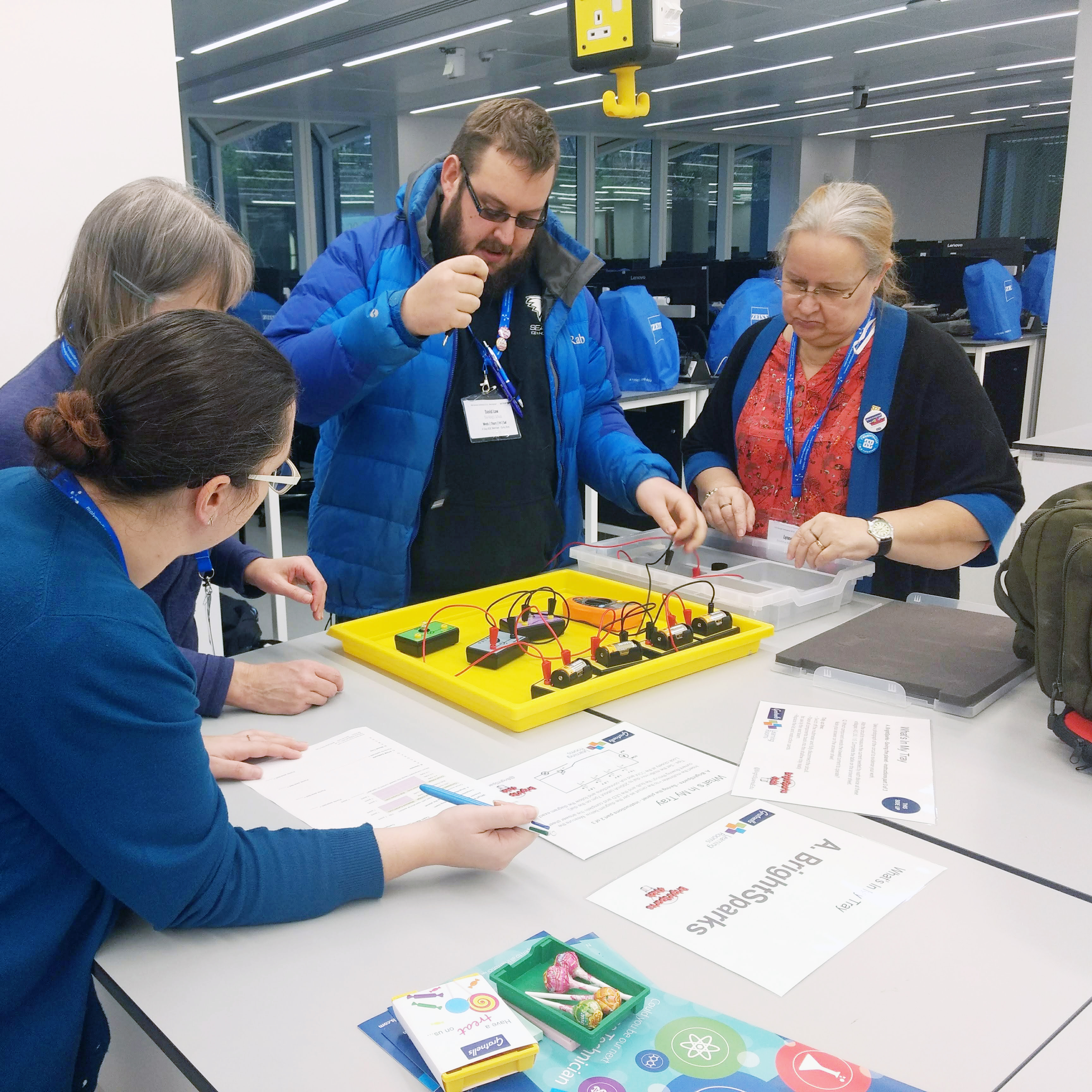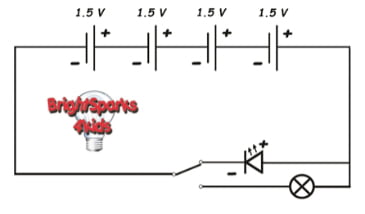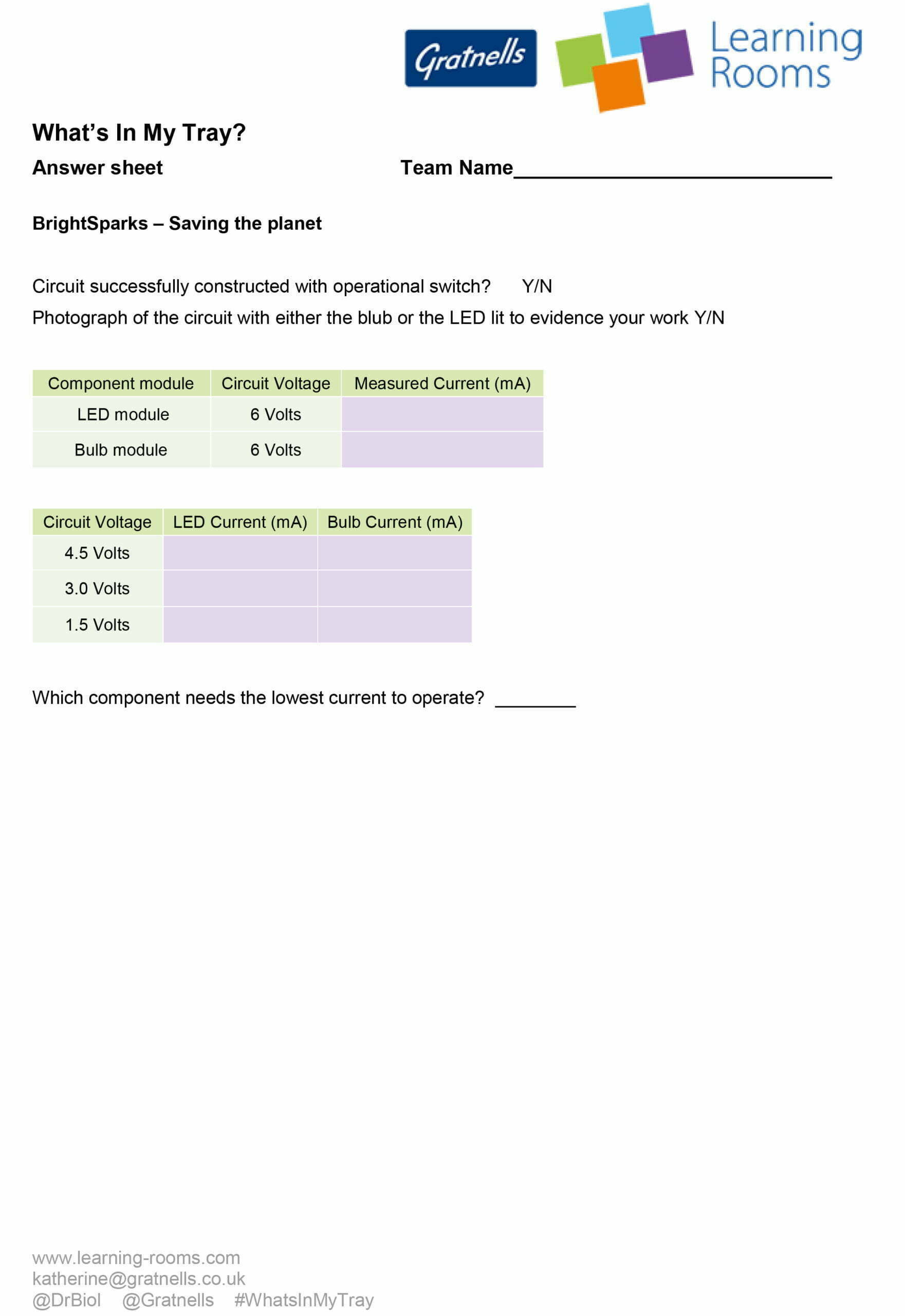BrightSparks – Saving the planet
This activity was created as part of a Gratnells What’s In My Tray CPD workshop for secondary science teachers and technicians to support practical work and delivery of the curriculum. It can be carried out as a stand-alone activity for students or combined with other activities from the session to form a STEM carousel.
The modules, leads, and multimeter are all available from BrightSparks 4kids who are the creator of this What’s In My Tray Activity.

A video of this activity by BrightSparks and Senior Science Technician Paul Cook can be found here: https://www.youtube.com/watch?v=sH2vTlwehYw&feature=youtu.be
You will need (per team of 4):
- 1 x Bulb module
- 1 x LED module
- 1 x Two Way Switch
- 1 x Digital Multimeter with user manual
- 9 x Connecting leads
- 4 x Battery Cell
- Gratnells shallow (F1) tray with lid and 4-section insert
- Gratnells art tray
- Recording sheet
This activity also works as an individual challenge, just increase the amount of time allocated to complete it.
This activity can be repeated as many times as required.
Preparation:
- Organise all the equipment into the shallow Gratnells (F1) tray 4-section insert and put the lid on. Place the shallow tray into the art tray.
What to do:
Does switching from traditional bulbs to LED lighting really save energy?
- Working in the large tray, use the BrightSparks modules and leads provided to construct the below circuit and then turn on the LED or the bulb. If the bulb or LED works you have successfully constructed the circuit.

- Insert the multimeter into the circuit as per the diagram below. Measure the current flowing through the bulb and the LED and complete the empty sections of Table 1 provided.
Tips: Set the multimeter dial to 200mA (about 7pm on the dial). Look closely at the COM and mA connections and follow the diagram exactly.

Table 1
| Component module | Circuit Voltage | Measured Current (mA) |
| LED module | 6 Volts | |
| Bulb module | 6 Volts |
- Take a photograph of the circuit with either the blub or the LED lit to evidence your work.
- Alter the circuit to measure the current needed by each device at these voltages: 4.5, 3.0, 1.5. Complete Table 2 provided.
Table 2
| Circuit Voltage | LED Current (mA) | Bulb Current (mA) |
| 4.5 Volts | ||
| 3.0 Volts | ||
| 1.5 Volts |
- Which component needs the lowest current to operate? Note your answer on the sheet provided.
Tidy up time:
- Switch off the multimeter and fully disconnect the circuit.
- Place all components back into the shallow tray ready for use by the next participants.
- Replace the lid and instruction cards.
Answers:
Table 1
| Component module | Circuit Voltage | Measured Current (mA) |
| LED module | 6 Volts | 5.0 – 5.5 |
| Bulb module | 6 Volts | 81.0 – 85.0 |
Table 2
Tip: Remove one battery cell at a time from the circuit and measure the current for both the LED and the bulb.
| Circuit Voltage | LED Current (mA) | Bulb Current (mA) |
| 4.5 Volts | 2.7 – 3.1 | 67.0 – 71.0 |
| 3.0 Volts | 0.7 – 0.9 | 54.0 – 57.0 |
| 1.5 Volts | 0 | 38.0 – 40.0 |
Which component needs the lowest current to operate? The LED
Please note: It is advisable to check the answers on your own circuit set up as results can vary slightly due to battery life.
Photograph of the completed circuit

What is happening?
We are commonly told to switch over to LED lighting to save energy. You have just carried out a simple experiment to observe the differences and found the much less current is required to operate the LED. Why is this? LEDs are up to 80% more efficient than traditional lighting, such as fluorescent and incandescent lights. 95% of the energy used by an LED is converted into light and only 5% is wasted as heat. This is compared to traditional incandescent (filament) bulbs, which convert 90% of energy to heat and only 10% into light! LEDs are more efficient because of better design, materials and construction. You can detect the difference in heat production yourself using your circuit, carefully feel the LED bulb and the traditional bulb, which one is the warmest?
Other things to try…
- Can you think of any other examples where this type of two-way switch is used?
- Can you measure the heat produced by the two light sources? You could experiment with contactless and traditional thermometers or use a data logger probe. Think about what measurements you need to take as your control readings?
- Based on the results in Table 1 and your answer to the question above, can you extrapolate your findings? For example, a small house may require 10 bulbs/LEDs, a small village 100 and a large village 1000. What would be the potential energy use in terms of current required for LEDs and bulbs for this number of devices? What would be the savings on total energy/current if LEDs were used? How much heat would be produced? Tip: create a table to show your answers.
- Share the photographs of your complete circuits on social media using #WhatsInMyTray.
Health & Safety
As with all Gratnells Learning Rooms What’s In My Tray Activities, you should carry out your own risk assessment prior to undertaking any of the activities or demonstrations


